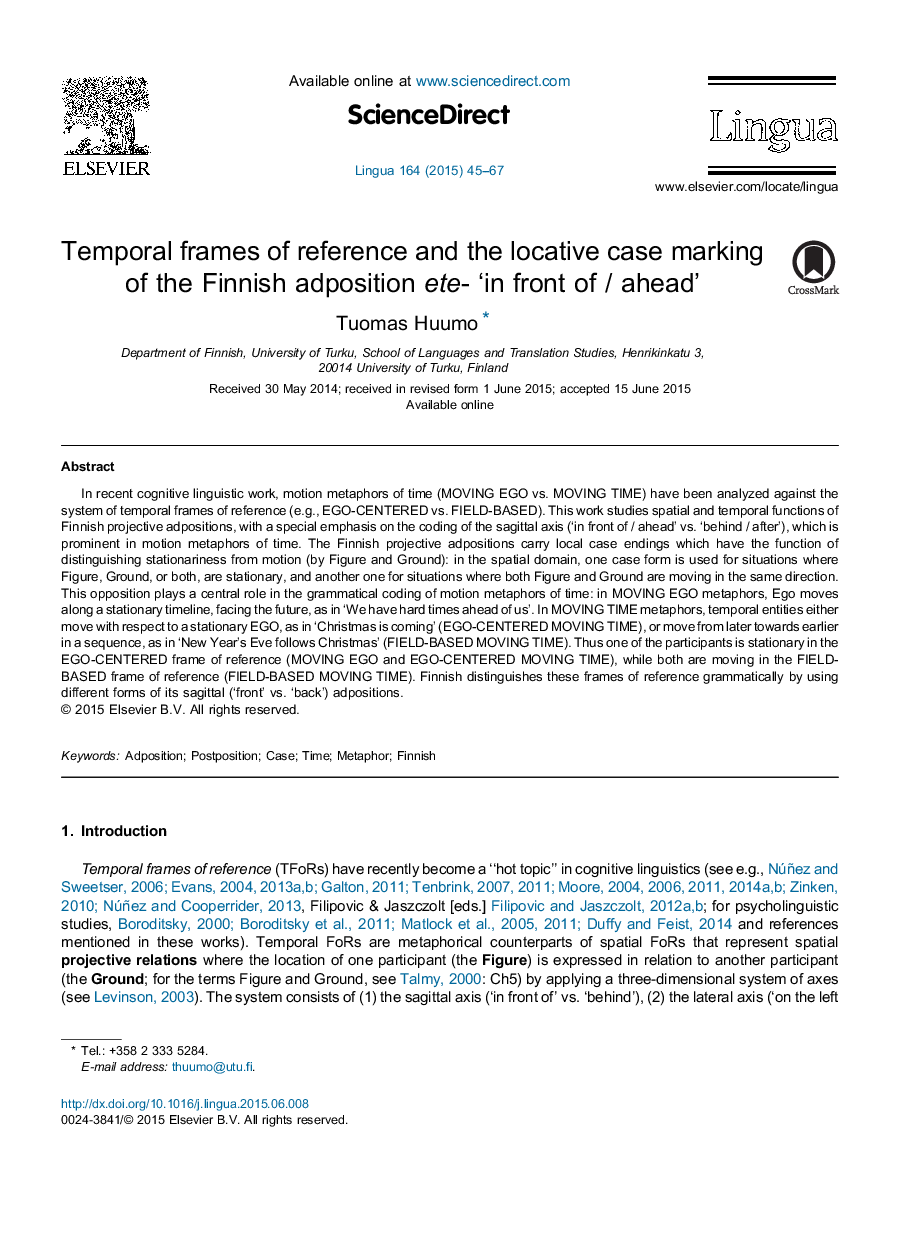| کد مقاله | کد نشریه | سال انتشار | مقاله انگلیسی | نسخه تمام متن |
|---|---|---|---|---|
| 10461106 | 923843 | 2015 | 23 صفحه PDF | دانلود رایگان |
عنوان انگلیسی مقاله ISI
Temporal frames of reference and the locative case marking of the Finnish adposition ete- 'in front of / ahead'
دانلود مقاله + سفارش ترجمه
دانلود مقاله ISI انگلیسی
رایگان برای ایرانیان
موضوعات مرتبط
علوم انسانی و اجتماعی
علوم انسانی و هنر
زبان و زبان شناسی
پیش نمایش صفحه اول مقاله

چکیده انگلیسی
In recent cognitive linguistic work, motion metaphors of time (MOVING EGO vs. MOVING TIME) have been analyzed against the system of temporal frames of reference (e.g., EGO-CENTERED vs. FIELD-BASED). This work studies spatial and temporal functions of Finnish projective adpositions, with a special emphasis on the coding of the sagittal axis ('in front of / ahead' vs. 'behind / after'), which is prominent in motion metaphors of time. The Finnish projective adpositions carry local case endings which have the function of distinguishing stationariness from motion (by Figure and Ground): in the spatial domain, one case form is used for situations where Figure, Ground, or both, are stationary, and another one for situations where both Figure and Ground are moving in the same direction. This opposition plays a central role in the grammatical coding of motion metaphors of time: in MOVING EGO metaphors, Ego moves along a stationary timeline, facing the future, as in 'We have hard times ahead of us'. In MOVING TIME metaphors, temporal entities either move with respect to a stationary EGO, as in 'Christmas is coming' (EGO-CENTERED MOVING TIME), or move from later towards earlier in a sequence, as in 'New Year's Eve follows Christmas' (FIELD-BASED MOVING TIME). Thus one of the participants is stationary in the EGO-CENTERED frame of reference (MOVING EGO and EGO-CENTERED MOVING TIME), while both are moving in the FIELD-BASED frame of reference (FIELD-BASED MOVING TIME). Finnish distinguishes these frames of reference grammatically by using different forms of its sagittal ('front' vs. 'back') adpositions.
ناشر
Database: Elsevier - ScienceDirect (ساینس دایرکت)
Journal: Lingua - Volume 164, Part A, September 2015, Pages 45-67
Journal: Lingua - Volume 164, Part A, September 2015, Pages 45-67
نویسندگان
Tuomas Huumo,